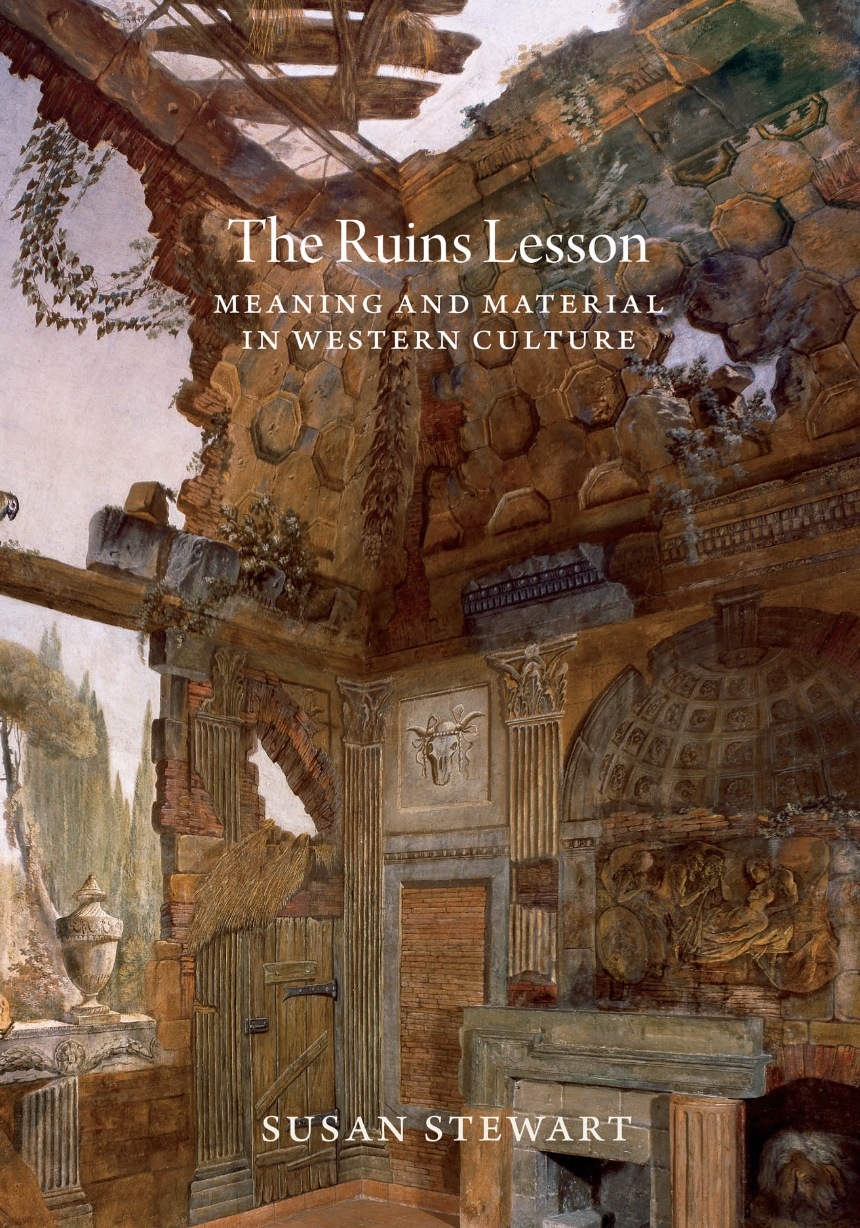The Ruins Lesson
Meaning and Material in Western Culture
How have ruins become so valued in Western culture and so central to our art and literature? Covering a vast chronological and geographical range, from ancient Egyptian inscriptions to twentieth-century memorials, Susan Stewart seeks to answer this question as she traces the appeal of ruins and ruins images, and the lessons that writers and artists have drawn from their haunting forms.
Stewart takes us on a sweeping journey through founding legends of broken covenants and original sin, the Christian appropriation of the classical past, and images of decay in early modern allegory. Stewart looks in depth at the works of Goethe, Piranesi, Blake, and Wordsworth, each of whom found in ruins a means of reinventing his art. Lively and engaging, The Ruins Lesson ultimately asks what can resist ruination—and finds in the self-transforming, ever-fleeting practices of language and thought a clue to what might truly endure.
Stewart takes us on a sweeping journey through founding legends of broken covenants and original sin, the Christian appropriation of the classical past, and images of decay in early modern allegory. Stewart looks in depth at the works of Goethe, Piranesi, Blake, and Wordsworth, each of whom found in ruins a means of reinventing his art. Lively and engaging, The Ruins Lesson ultimately asks what can resist ruination—and finds in the self-transforming, ever-fleeting practices of language and thought a clue to what might truly endure.
400 pages | 11 color plates, 80 halftones | 7 x 10 | © 2019
Architecture: History of Architecture
History: European History
Literature and Literary Criticism: General Criticism and Critical Theory
Philosophy: Aesthetics
Reviews
Table of Contents
List of Illustrations
Preface
Introduction: Valuing Ruin
I. Matter: This Ruined Earth
II. Marks: Inscriptions and Spolia
III. Mater: Nymphs, Virgins, and Whores—On the Ruin of Women
IV. Matrix: Humanism and the Rise of the Ruins Print
V. Model: The Architectural Imaginary
VI. Mirrors: The Voyages and Fantasies of the Ruins Craze
VII. The Unfinished: On the Nonfinality of Certain Works of Art
VIII. Resisting Ruin: The Decay of Monuments and the Promises of Language
Acknowledgments
Notes
Works Cited
Photography Credits
Name Index
Subject Index
Preface
Introduction: Valuing Ruin
I. Matter: This Ruined Earth
II. Marks: Inscriptions and Spolia
III. Mater: Nymphs, Virgins, and Whores—On the Ruin of Women
IV. Matrix: Humanism and the Rise of the Ruins Print
V. Model: The Architectural Imaginary
VI. Mirrors: The Voyages and Fantasies of the Ruins Craze
VII. The Unfinished: On the Nonfinality of Certain Works of Art
VIII. Resisting Ruin: The Decay of Monuments and the Promises of Language
Acknowledgments
Notes
Works Cited
Photography Credits
Name Index
Subject Index
Awards
Nanovic Institute for European Studies, University of Notre Dame: Laura Shannon Prize in Contemporary European Studies
Silver Medal
